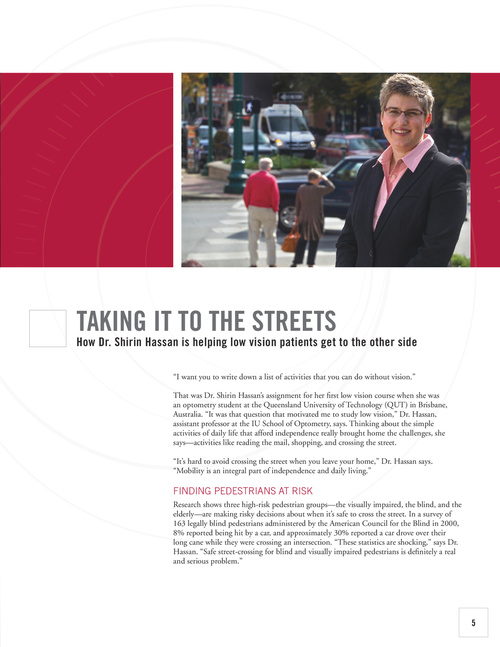
TAKING IT TO THE STREETS
How Dr. Shirin Hassan is helping low vision patients get to the other side
“I want you to write down a list of activities that you can do without vision.” That was Dr. Shirin Hassan’s assignment for her first low vision course when she was an optometry student at the Queensland University of Technology (QUT) in Brisbane, Australia. “It was that question that motivated me to study low vision,” Dr. Hassan, assistant professor at the IU School of Optometry, says. Thinking about the simple activities of daily life that afford independence really brought home the challenges, she says—activities like reading the mail, shopping, and crossing the street. “It’s hard to avoid crossing the street when you leave your home,” Dr. Hassan says. “Mobility is an integral part of independence and daily living.”
FINDING PEDESTRIANS AT RISK
Research shows three high-risk pedestrian groups—the visually impaired, the blind, and the elderly—are making risky decisions about when it’s safe to cross the street. In a survey of 163 legally blind pedestrians administered by the American Council for the Blind in 2000, 8% reported being hit by a car, and approximately 30% reported a car drove over their long cane while they were crossing an intersection. “These statistics are shocking,” says Dr. Hassan. “Safe street-crossing for blind and visually impaired pedestrians is definitely a real and serious problem.”
5